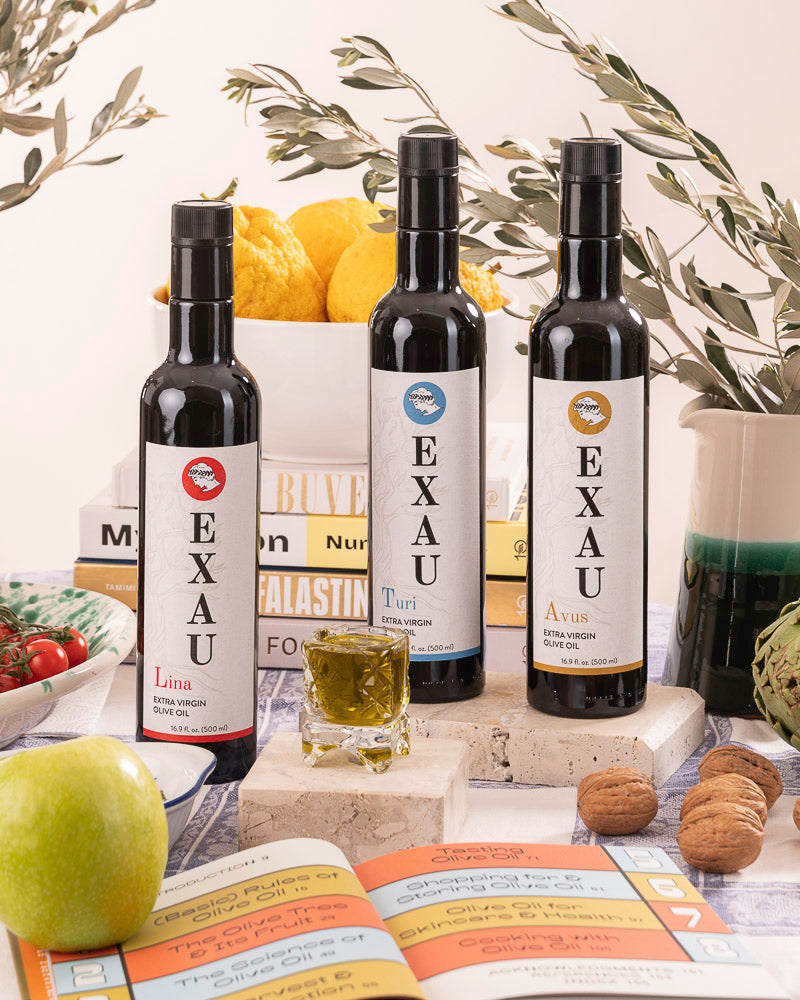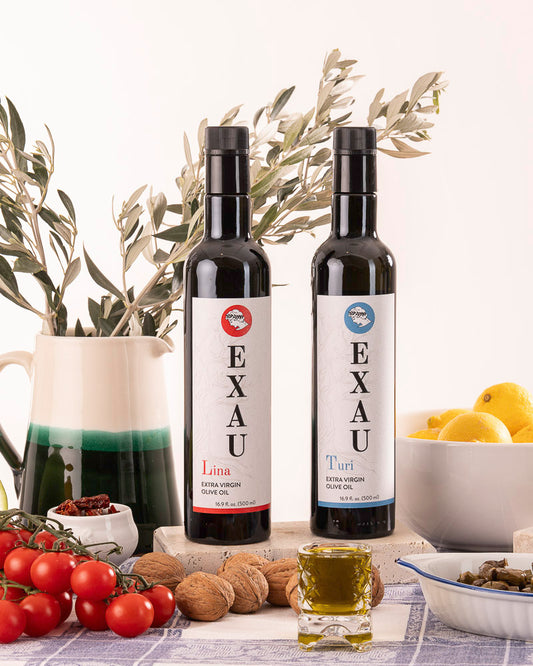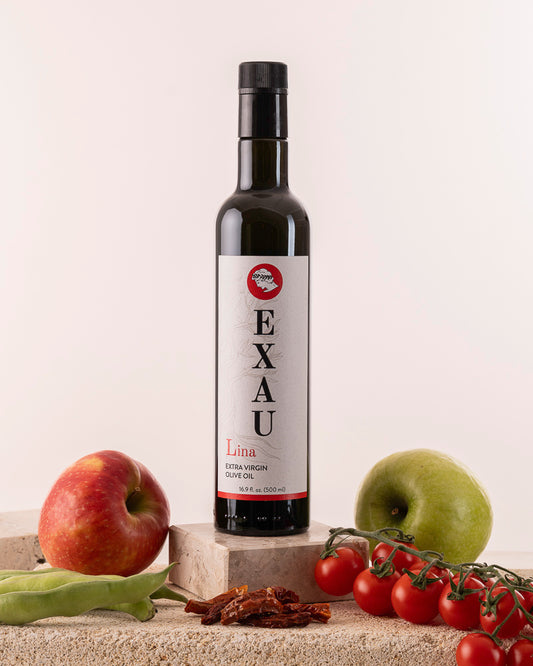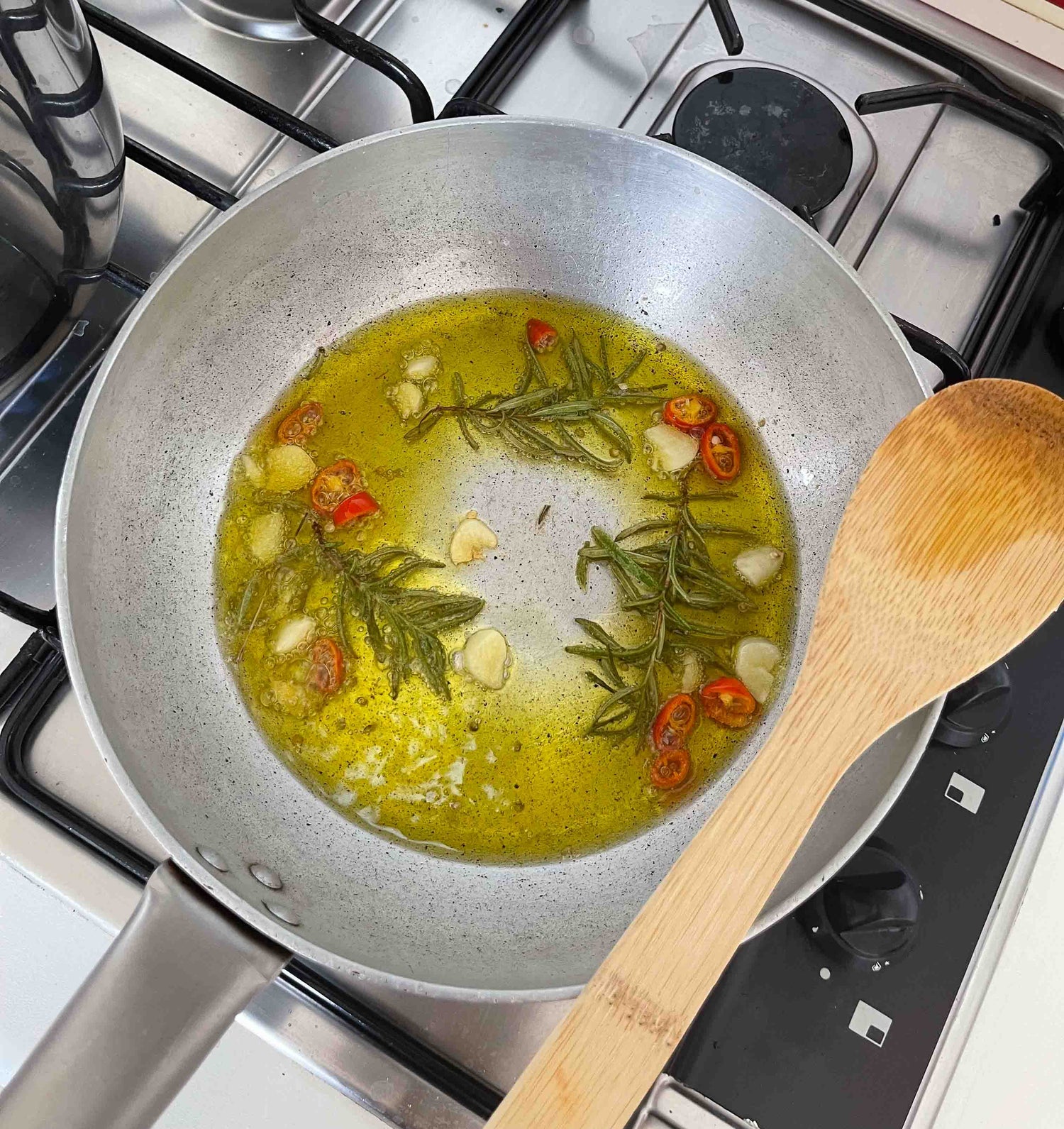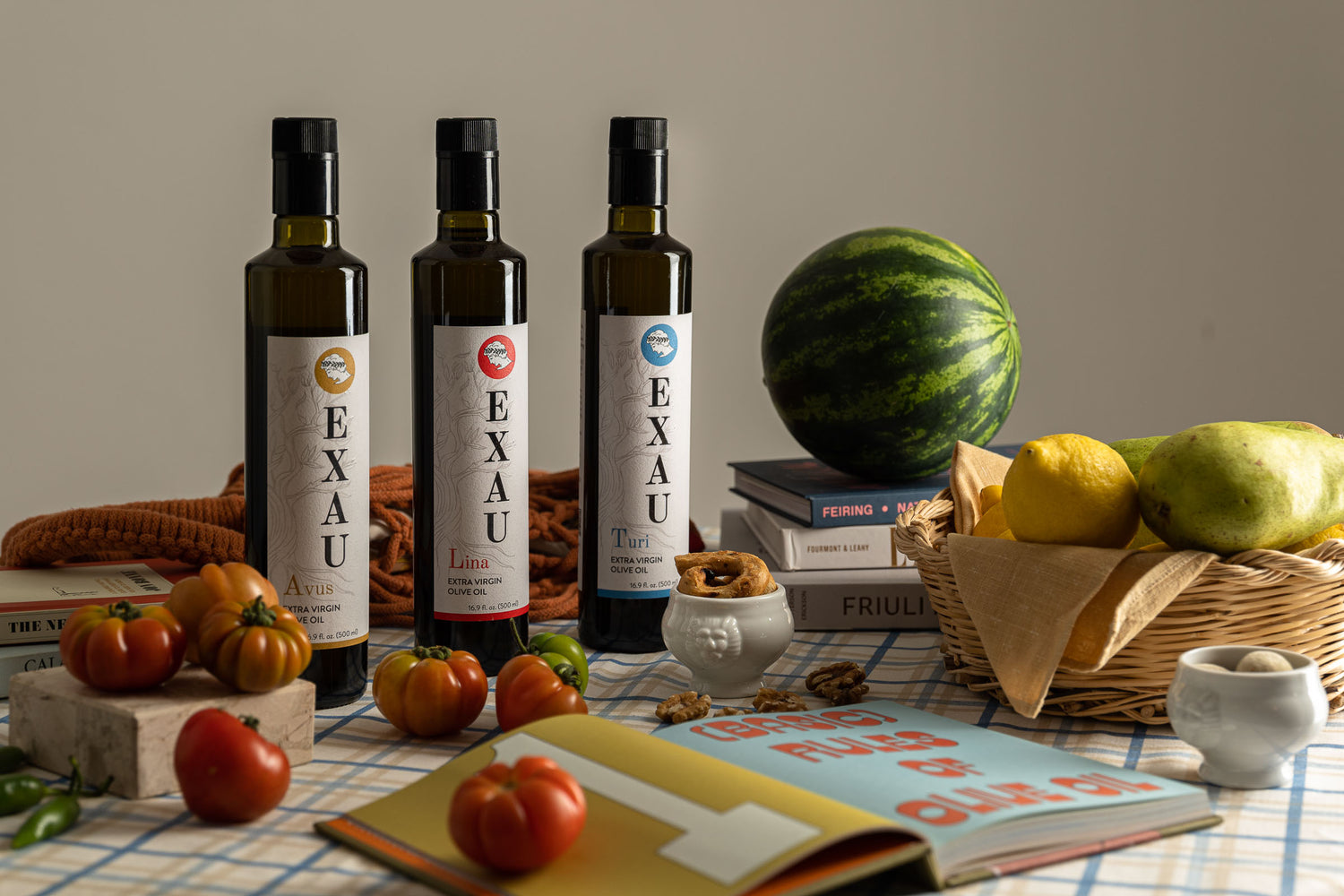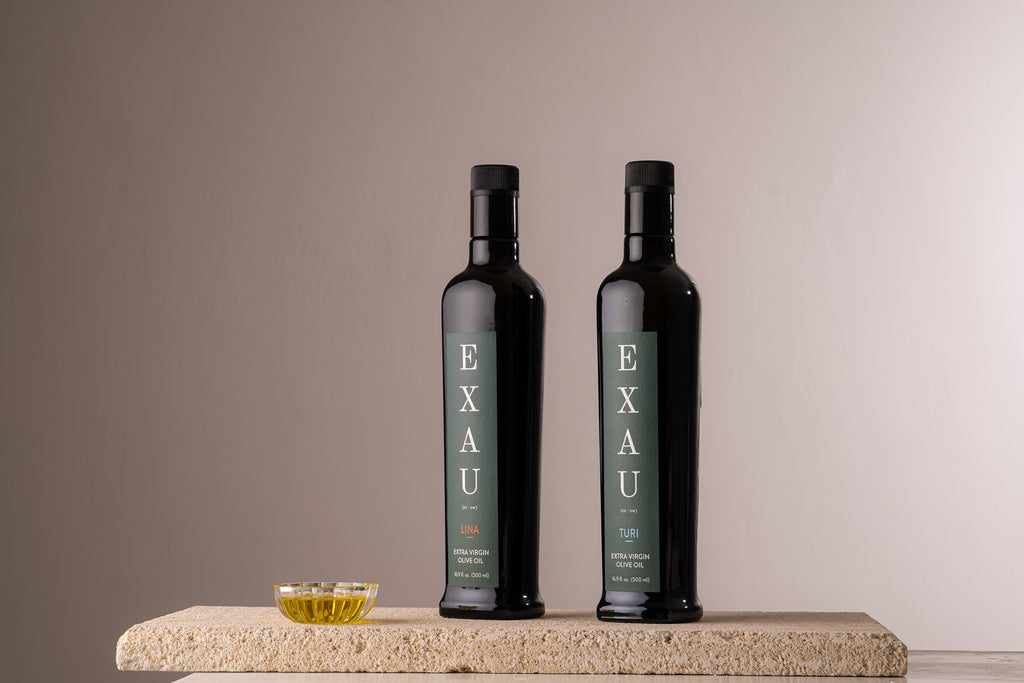
What is Italian Extra Virgin Olive Oil?
Genuine Italian extra virgin olive oil is produced in Italy from fruit that is native to the country. It is the base of most savory Italian dishes and can be found in kitchens in every corner of the country.
Among the various types, Italian extra virgin olive oil stands out as one of the highest quality and most sought-after globally. It consistently ranks as some of the best in the world at competitions.
Olive oil is not only a staple ingredient in Mediterranean cuisine but also a health booster. Genuine Italian oils are gaining popularity worldwide due to its purity, rich flavor, and numerous health benefits.
The Origins of Italian Extra Virgin Olive Oil
Italian extra virgin olive oil has a rich history dating back to ancient Rome. At the time it was considered a precious commodity. The Mediterranean climate and the fertile soil of Italy provided an ideal environment for olive tree cultivation. This led to the production of high-quality extra virgin olive oil.
Today, Italy remains one of the top producers and exporters of the product worldwide. The country regularly competes with Greece as the second-largest producer.
What Makes Italian Extra Virgin Olive Oil Special
Italy is home to over 650 cultivars of olive trees. This makes the Mediterranean country the most bio-diverse region in the world when it comes to the plant.
In addition, each region has its own native cultivar(s). This contributes to the diversity of Italian extra virgin olive oil and makes the product a strong point of reference for the global market.
Each cultivar is not only a tree but a reflection of the history, traditions, climate, and terroir of each region in Italy. From the north to the south each oil has its own classic, or typical, characteristics.

The Role of Terroir
Terroir plays a huge roles in the world of genuine Italian extra virgin olive oil. Many of the typical characteristics of an oil go beyond the cultivar. And this is where the world of olive oil becomes similar to wine.
According to Merriam Webster terroir is "the combination of factors including soil, climate, and sunlight that gives wine grapes their distinctive character" [source].
If we apply terroir to olives we can see the way geographical location, elevation, sunlight, and more can impact the final product. Terroir creates unique and fascinating environments for the fruit to grow.
Later these elements show up in the product as chemical, physical, and sensory profiles.
For more on terroir order our book, The Olive Oil Enthusiast.

Tuscany
Tuscany is famous for a large variety of cultivars in Italy. It's especially well known for two cultivars which now grow all over the world, Leccino and Frantoio.
Tuscany is well know in North America, and many consumers believe their olive oil comes from the region. However, Tuscany doesn't produce very much of the product. While the trees from the region are well known across Italy, the region itself only produces between 2% - 3% of all the olive oil in Italy.
Leccino
Leccino is one of the most widespread olive plants in Italy. This tree is special because it's equipped with great adaptability and incredibly resistance to diseases. This is especially important as Italy battles the Xyllela disease.
In addition, Leccino is an excellent cultivar for constant and abundant production. Genuine Italian extra virgin olive oil from this tree often has the characteristics of gentle, medium fruity with sensations of fresh almond and light herbs, and light artichoke.
Frantoio
Today you can the varietal of Frantoio across all of Italy. This plant adapts very well to different geographical locations, climates, and soil types. One of the main characteristics of Frantoio is that it shares genetic characteristics with many other varieties.
All these varieties have one factor in common, the characteristic smell of fresh almonds. Fruitiness of medium or intense, with sensation of fresh almond, herbs, and artichoke.

Calabria
Calabria is the second-largest producer of olive oil in Italy. It's one of the few regions that encompasses the climate of all of Italy in one place. Calabria also has the only peninsula within the Italian peninsula with mountains.
The trees in Calabria enjoy a higher vigor than other parts of Italy thanks to the mild climate and year round sunlight. Some of the most well-known cultivars in Calabria are Carolea and Ottobratica.

Carolea
Carolea is present throughout almost all of Calabria. However, you can also find this tree in other parts of southern Italy. It's one of the oldest plants, dating back to the eighth century BC.
The ancient Greeks planted and cultivated the Carolea tree in the most suitable terrains. This tree is special because the fruit can be used to produce both oil and table olives for eating.
The typical sensory profile of the Carolea fruit is medium fruitiness. Herbaceous sensation followed by a sensation of green apple and fresh almond fruit, light artichoke and tomato.
If you want to taste Carolea try the Turi.
Ottobratica
Ottobratica is a pure and true Calabrian cultivar. It's named Ottobratica because the fruit from this plant must be harvested in the month of October. For context, Ottobre in Italian means October in English.
The fruit from ottobratica is only used to produce Italian extra virgin olive oil. The flavor profile can be described as medium or intense with sensations of herbs, artichoke, almond, and green fruit.

Campania
Campania is a region in southern Italy that overlooks the Tyrrhenian Sea. It's very mountainous which can make it difficult to grow agriculture. The coastal areas are more favorable because they allow agriculture to flourish.
Campania is also home to the famous Amalfi coast, Sorrento, and Gragnano. Lastly, it's home to the active volcano Mount Vesuvius. The volcano heavily impacts the terroir within the region. The hillsides where agriculture does grow are also very unique.
Ortice
Ortice is native to Campania. You can find it mostly in the hills of Benevento, its natural habitat. This tree can grow in altitudes up to 700 to 800 meters (2,297 to 2,625 feet).
Ortice can be used to produce both oil and table olives for eating. However, it's primarily used to produce Italian extra virgin olive oil which is characterized by its medium or intense fruity with hints of grass/leaf and tomato and light sensations of artichoke and fresh almond
Ravece
Ravece is a very old cultivar and a symbol of Irpinia. There's documentation of this tree going back to the 5th century.
The fruit is used for both table olives and oil. Genuine Italian extra virgin olive oil produced from the ravece plant is characterized with intensely fruity with hints of tomato leaf, artichoke and green almond.
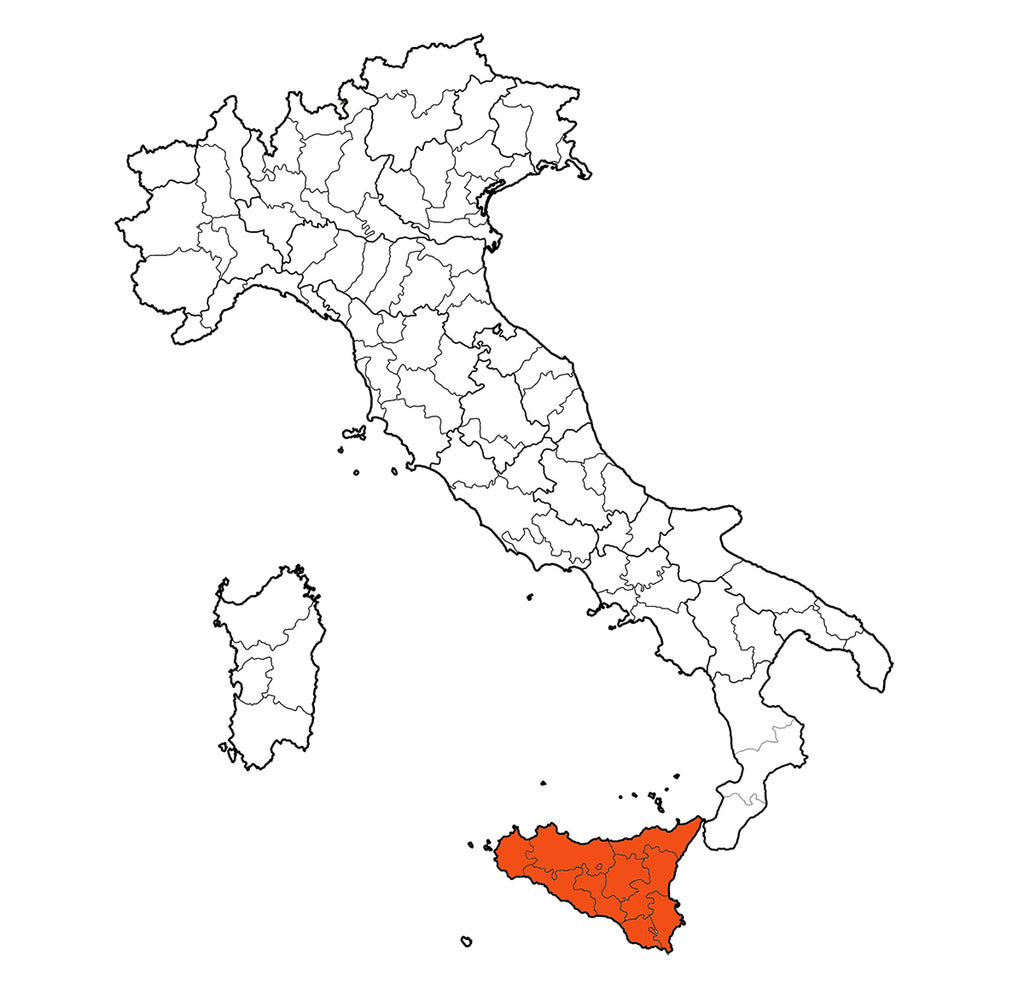
Sicily
Sicily is the largest island in the Mediterranean. It's predominantly hilly and there's no shortage of mountains. Sicily is home to the Peloritani mountain range which are a continuation of the Calabrian Apennines.
In addition to the mild island climate, the agriculture in Sicily is heavily influenced by intense volcanic activity. This is because of the volcano Mount Etna. The volcano also heavily impacts the terroir within the surrounding region.
Nocellara del Belice
Nocellara del Belice is a very famous cultivar! Researchers believe its origins are Greek. This tree grows natively in the Belice Valley, where it evolved between the years 1600 to 1700 up to the present day.
Nocellara del Belice is primarily used for table olives. However, many also use the fruit to produce high-quality Italian extra virgin olive oil which is described as medium or intense fruitiness with sensations of herb/leaves, green tomato, and artichoke
Biancolilla
Biancolilla is one of the oldest cultivars in Sicily. The fruit is only used to produce oil.
Biancolilla is unique because as its name implies, the color of the fruit does not change as it matures. When the fruit becomes ripe it turns a reddish color. It's known for its remarkable rusticity. The plant is very resistant to fungal attacks and drought.
Biancolilla produces genuine Italian extra virgin olive oil of medium fruitiness, predominantly herbaceous with hints of almond, artichoke and tomato

Puglia
Puglia is the number one producer of olive oil in Italy. This region occupies the heel of Italy. And like Calabria has a peninsula within the Italian peninsula. Puglia is also often called the Apulian board because it's very flat.
In addition, Puglia is famous for its beautiful coastlines, wine, and incredible sea food.
Unfortunately, Puglia is currently battling a terrible bacteria called Xylella Fastidiosa. This bacteria is destroying groves across Salento, changing the beautiful landscape and permanently wiping out native plants.
Coratina
Coratina is a very typical cultivar of the Corato area from which the varietal takes its name. It's one of the most famous cultivars in the world and used to produce genuine Italian extra virgin olive oil.
Classic Coratina characteristics include medium/intense, marked bitterness and spiciness, with decidedly herbaceous sensations, with almond and artichoke.
Cellina di Nardò
Cellina di Nardò is one of the symbolic cultivars of Salento. An ancient cultivar, beloved by the Latins exported it to the East where it was greatly appreciated by the Saracens. Cellina di Nardò is also commonly called saracena for this very reason.
This fruit has a very interesting characteristic, the ability to ripen to an intense black color. Cellina di Nardò is used both for table olives and for oil.
Genuine Italian extra virgin olive oil produced with Cellina di Nardò fruit is characterized with particular notes of berries beyond the almond and the artichoke.
Conclusion
In conclusion, Italian extra virgin olive oil is incredibly diverse. There's so much to the product, much more than we can fit into one post. We hope this article helps you to better understand the product and make more informed decisions when shopping!
You might also like...
Pssst, we wrote a book, have you ordered it yet?
If you learned something new or have opinions on this topic, please leave a comment and let us know your thoughts! We love to hear from you. If you’re on Instagram, TikTok, or Facebook don’t forget to tag us and use #EXAUoliveoil so we can repost!
